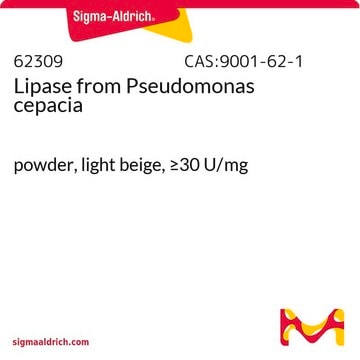P0359
Palmitoylethanolamide
≥98% (HPLC), powder, cannabinoid receptor agonist
Synonym(e):
N-(2-Hydroxyethyl)hexadecanamide, PEA, Palmidrol
About This Item
Empfohlene Produkte
product name
Palmitoylethanolamide,
Form
powder
Lagertemp.
−20°C
SMILES String
CCCCCCCCCCCCCCCC(=O)NCCO
InChI
1S/C18H37NO2/c1-2-3-4-5-6-7-8-9-10-11-12-13-14-15-18(21)19-16-17-20/h20H,2-17H2,1H3,(H,19,21)
InChIKey
HXYVTAGFYLMHSO-UHFFFAOYSA-N
Angaben zum Gen
human ... CNR1(1268) , CNR2(1269)
rat ... Faah(29347)
Anwendung
Biochem./physiol. Wirkung
Verlinkung
Signalwort
Danger
H-Sätze
Gefahreneinstufungen
Aquatic Chronic 2 - Eye Dam. 1 - Skin Irrit. 2
Lagerklassenschlüssel
13 - Non Combustible Solids
WGK
WGK 2
Flammpunkt (°F)
Not applicable
Flammpunkt (°C)
Not applicable
Persönliche Schutzausrüstung
Eyeshields, Gloves, type N95 (US)
Analysenzertifikate (COA)
Suchen Sie nach Analysenzertifikate (COA), indem Sie die Lot-/Chargennummer des Produkts eingeben. Lot- und Chargennummern sind auf dem Produktetikett hinter den Wörtern ‘Lot’ oder ‘Batch’ (Lot oder Charge) zu finden.
Besitzen Sie dieses Produkt bereits?
In der Dokumentenbibliothek finden Sie die Dokumentation zu den Produkten, die Sie kürzlich erworben haben.
Kunden haben sich ebenfalls angesehen
Unser Team von Wissenschaftlern verfügt über Erfahrung in allen Forschungsbereichen einschließlich Life Science, Materialwissenschaften, chemischer Synthese, Chromatographie, Analytik und vielen mehr..
Setzen Sie sich mit dem technischen Dienst in Verbindung.














